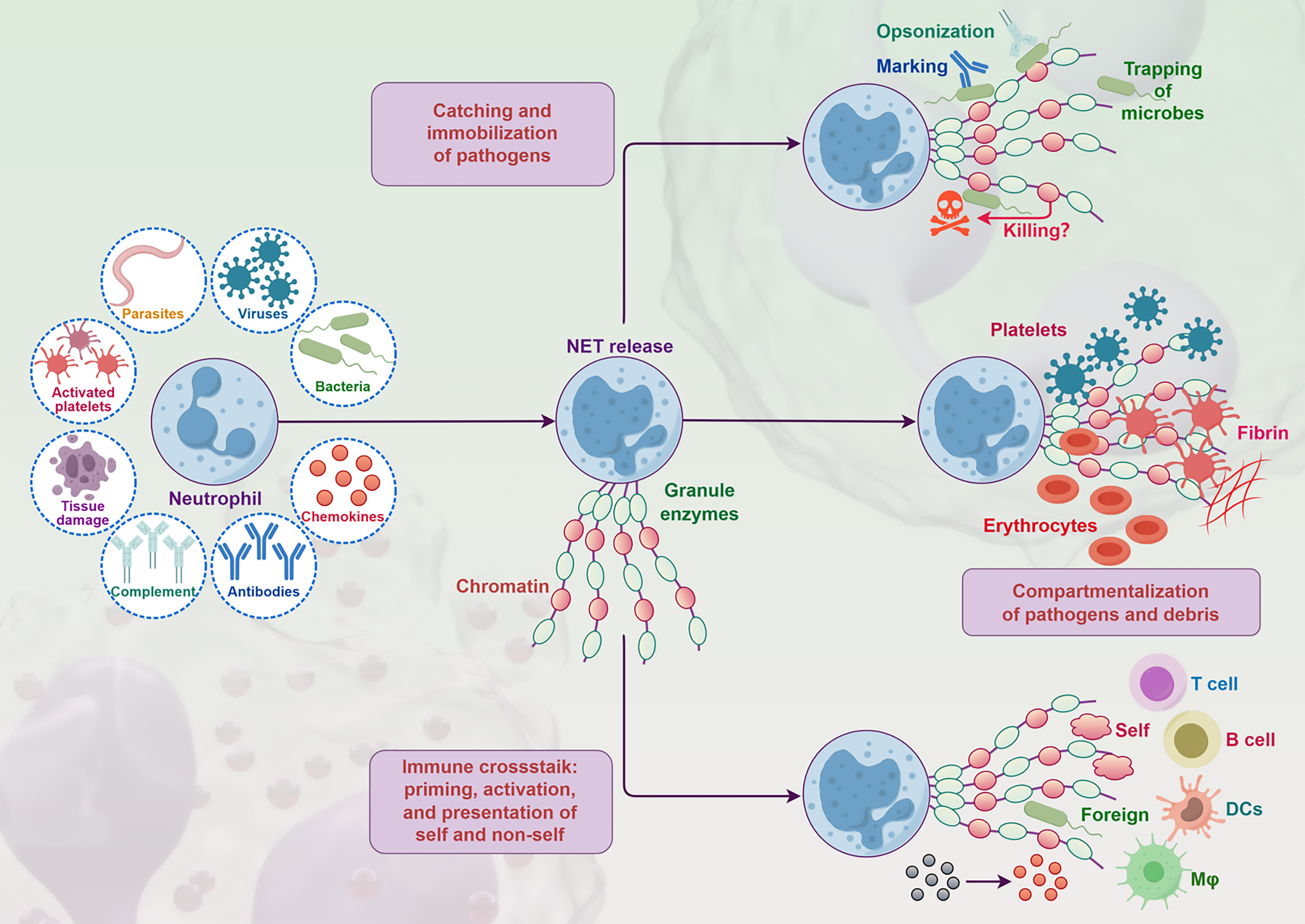Copyright
©The Author(s) 2025.
World J Gastrointest Oncol. Jul 15, 2025; 17(7): 107589
Published online Jul 15, 2025. doi: 10.4251/wjgo.v17.i7.107589
Published online Jul 15, 2025. doi: 10.4251/wjgo.v17.i7.107589
Figure 4 Neutrophil extracellular traps formation process and roles.
When stimulated by pathogens such as parasites, viruses, and bacteria, as well as activated platelets, tissue damage, and immune related substances like chemokines, complement, and antibodies, neutrophils release neutrophil extracellular traps (NETs) composed of chromatin and granule enzymes. The formed NETs can catch and immobilize pathogens. Through opsonization, they assist in the recognition and trapping of microbes. They can also compartmentalize pathogens and debris to limit their spread, and participate in immune crosstalk, priming, activating, and presenting self and non self antigens, involving various immune cells. DC: Dendritic cell.
- Citation: Xu ZX, Qu FY, Zhang Z, Luan WY, Lin SX, Miao YD. Exploring the role of neutrophil extracellular traps in colorectal cancer: Insights from single-cell sequencing. World J Gastrointest Oncol 2025; 17(7): 107589
- URL: https://www.wjgnet.com/1948-5204/full/v17/i7/107589.htm
- DOI: https://dx.doi.org/10.4251/wjgo.v17.i7.107589









